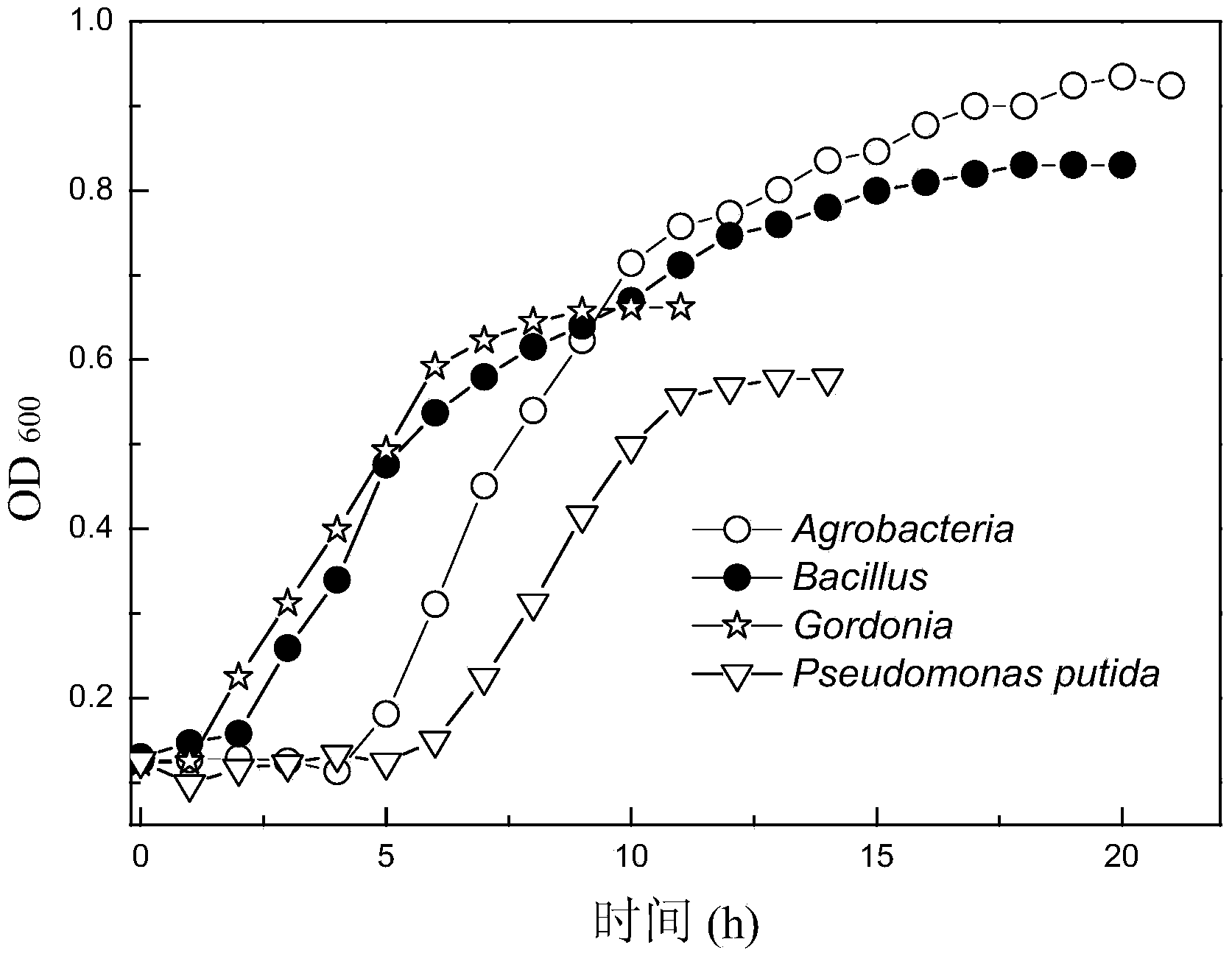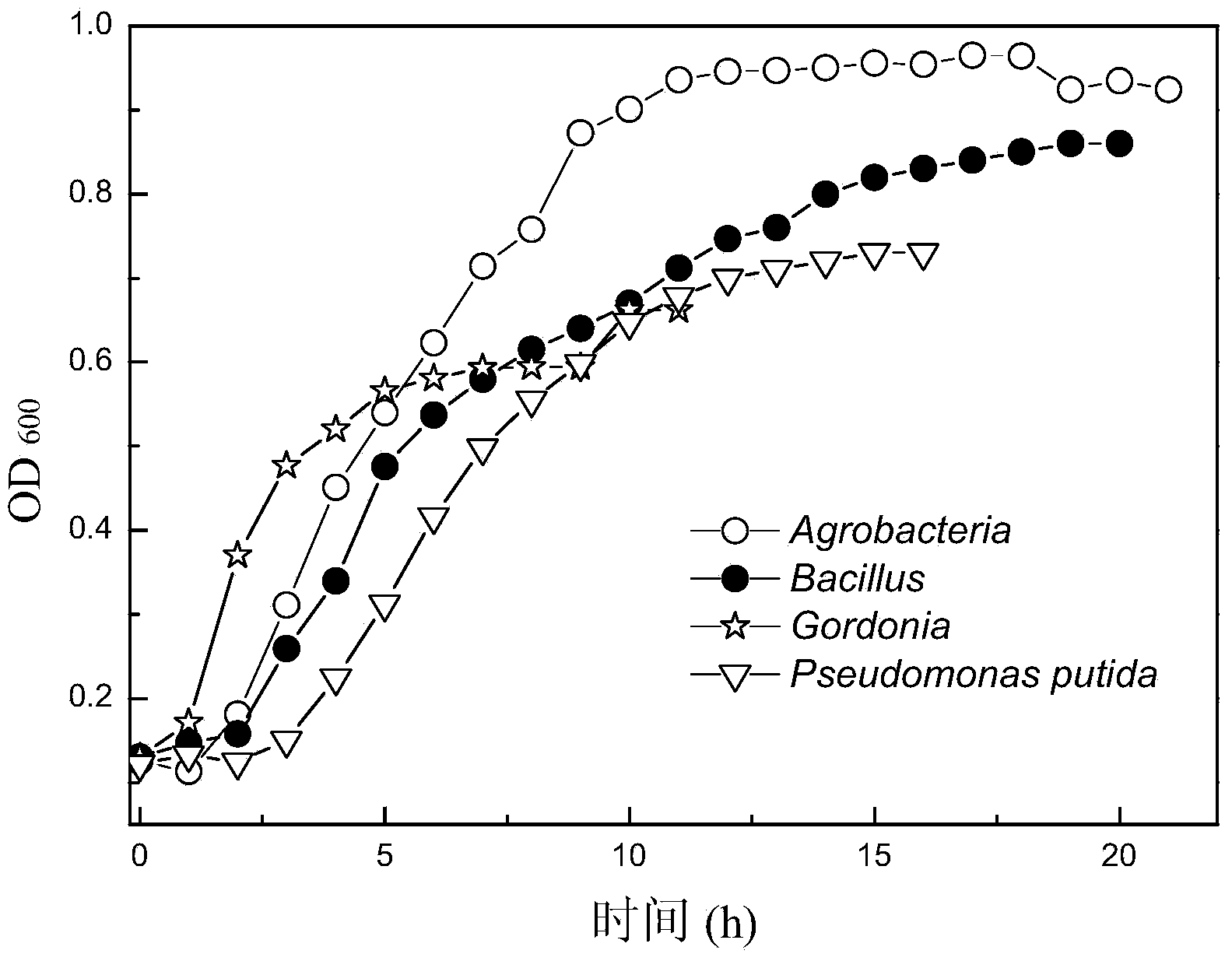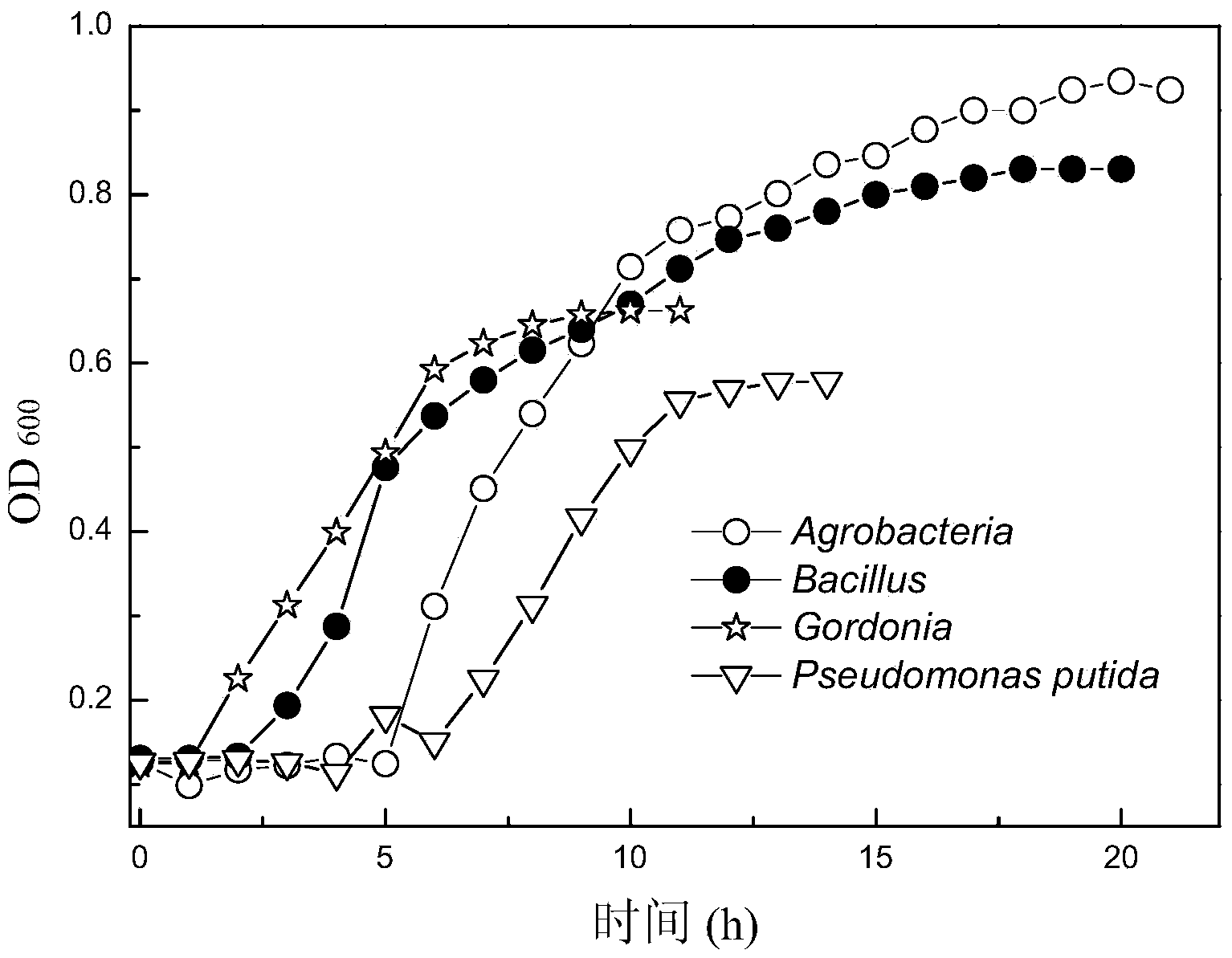Dominant microflora for degrading deca-brominated diphenyl ether waste water and preparation method thereof
A decabromodiphenyl ether, dominant flora technology, applied in the directions of microorganism-based methods, biochemical equipment and methods, chemical instruments and methods, etc.
- Summary
- Abstract
- Description
- Claims
- Application Information
AI Technical Summary
Problems solved by technology
Method used
Image
Examples
Embodiment 1
[0025]Pick four rings of bacteria respectively: Agrobacterium sp., Bacillus sp., Gordonia, Pseudomonas putida (from soil polluted by electronic waste Separated from ) were transferred to 20mL nutrient solution containing 1.5g / L beef extract, 1.0g / L glucose, 5.5g / L tryptone, 3.0g / L yeast powder, pH6.0, and the rest In a container of water), each type of bacteria was cultured at 35°C for 1 day, and then the cultured four kinds of bacteria were inoculated to 300mL sterile Cultured in the container of the proliferation medium for 2 days under the condition of 27° C., centrifuged at 6000 rpm for 15 minutes, and obtained the logarithmic growth phase cells of the above four kinds of bacteria respectively. Among them, four different bacteria use different proliferation media, Agrobacterium sp. and Bacillus sp. use nutrient broth, the composition of which is as follows: beef extract 3.0g / L, tryptone 4.0g / L, the rest is water; Gordonia (Gordonia) adopts the yeast extract glucose mediu...
Embodiment 2
[0031] Four rings of bacteria were picked respectively: Agrobacterium sp., Bacillus sp., Gordonia, Pseudomonas putida (from soil polluted by electronic waste Separated from) were transferred to 40mL nutrient solution containing 2.0g / L beef extract, 1.5g / L glucose, 6.5g / L tryptone, 3.5g / L yeast powder, pH7.0, and the rest In a container of water), each type of bacteria was cultured at 30°C for 1 day, and then the cultured four kinds of bacteria were inoculated at a volume ratio of 1:10 (mixed bacteria solution and nutrient solution) to contain 400mL of no Cultivate in a container of bacterial proliferation medium for 1 day at 35° C., centrifuge at a speed of 7000 rpm for 10 min, and obtain logarithmic growth phase cells of the above-mentioned four kinds of bacteria respectively. Among them, four different bacteria use different proliferation media, Agrobacterium sp. and Bacillus sp. use nutrient broth, the composition of which is as follows: beef extract 3.5g / L, tryptone 5.0g ...
Embodiment 3
[0037] Four rings of bacteria were picked respectively: Agrobacterium sp., Bacillus sp., Gordonia, Pseudomonas putida (from soil polluted by electronic waste Separated from) were transferred to 50mL nutrient solution (the main components are 1.7g / L beef extract, 2.0g / L glucose, 6.0g / L tryptone, 4.0g / L yeast powder, pH8.0, The rest is water), each kind of bacteria was cultured at 27°C for 2 days, and then the cultured four kinds of bacteria were respectively inoculated with a volume ratio of 1:12 (mixed bacteria solution and nutrient solution) to contain 500mL Cultivate in a sterile proliferation medium container for 1 day at 35° C., centrifuge at a speed of 6000 rpm for 15 minutes, and obtain logarithmic growth phase cells of the above four bacteria respectively. Among them, four different bacteria use different proliferation media, Agrobacterium sp. and Bacillus sp. use nutrient broth, the composition of which is as follows: beef extract 4.0g / L, tryptone 4.5g / L, the rest is...
PUM
 Login to view more
Login to view more Abstract
Description
Claims
Application Information
 Login to view more
Login to view more - R&D Engineer
- R&D Manager
- IP Professional
- Industry Leading Data Capabilities
- Powerful AI technology
- Patent DNA Extraction
Browse by: Latest US Patents, China's latest patents, Technical Efficacy Thesaurus, Application Domain, Technology Topic.
© 2024 PatSnap. All rights reserved.Legal|Privacy policy|Modern Slavery Act Transparency Statement|Sitemap



